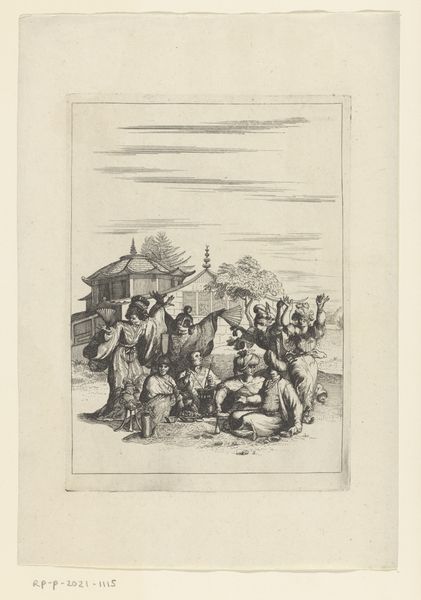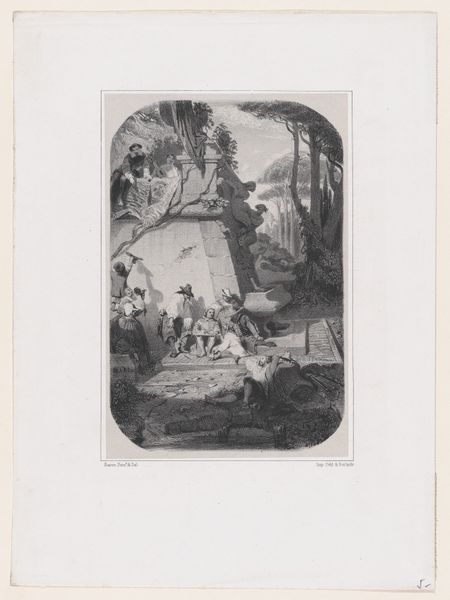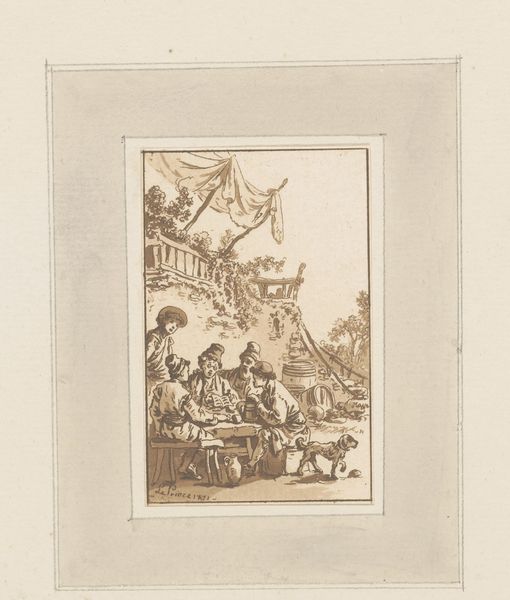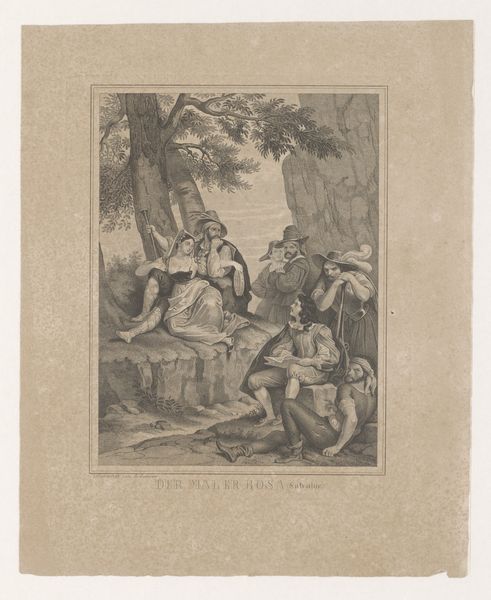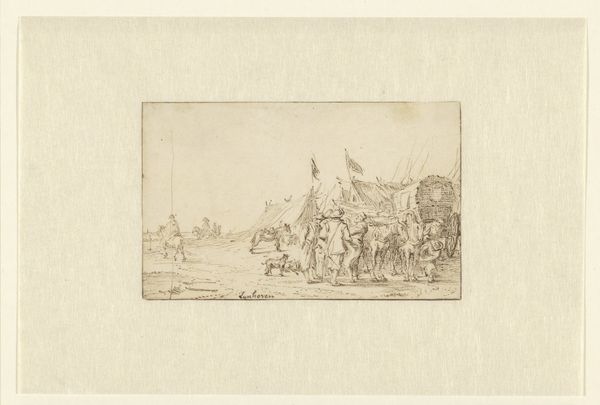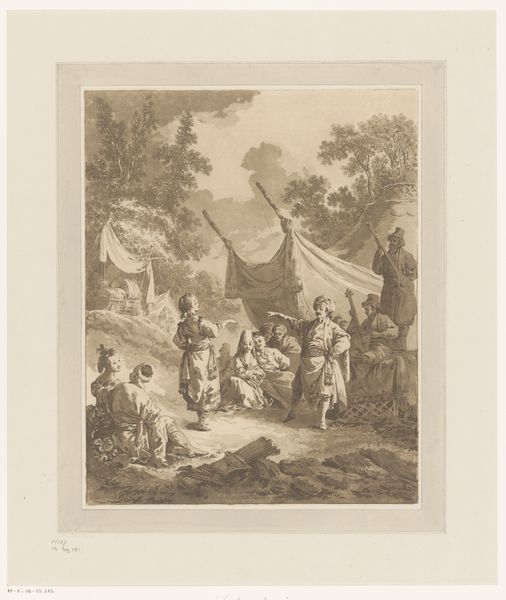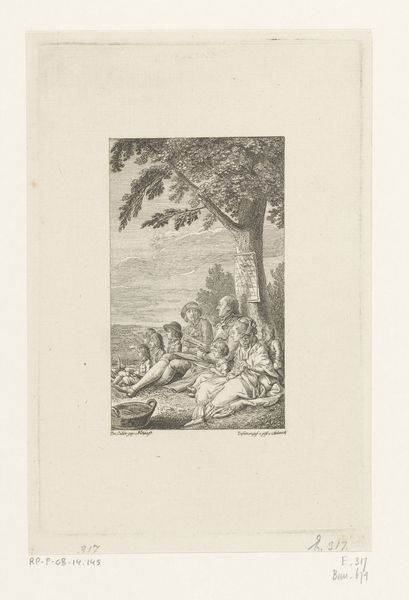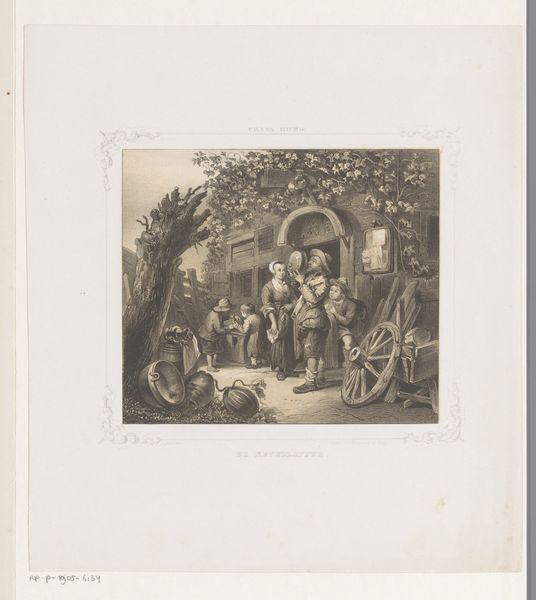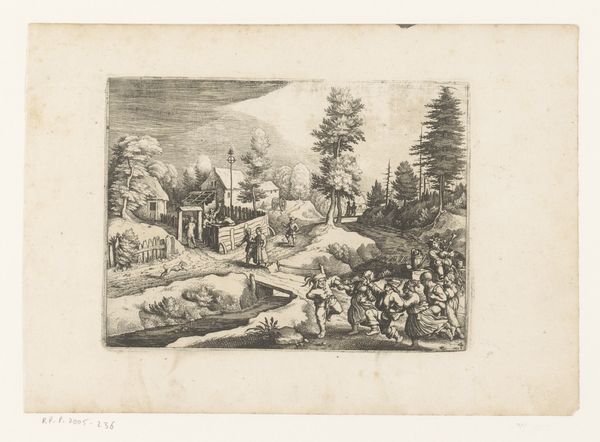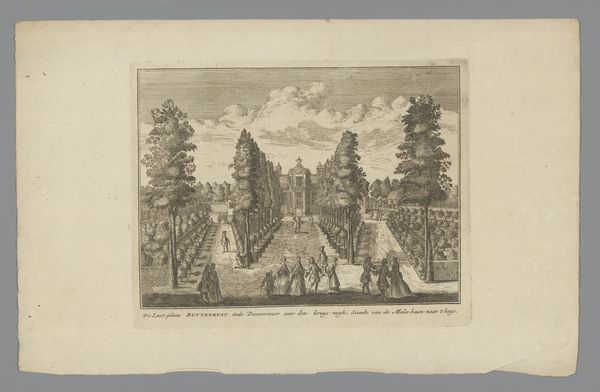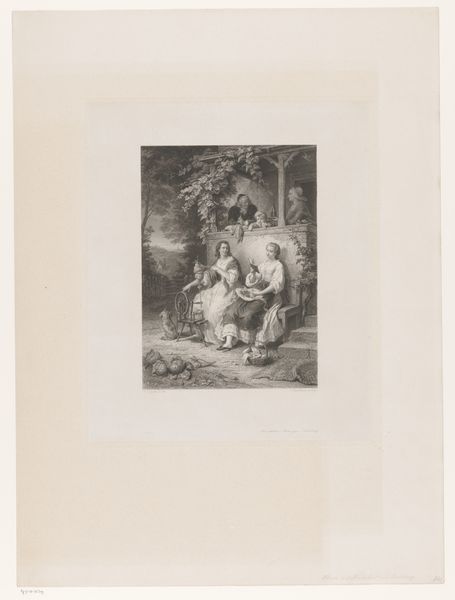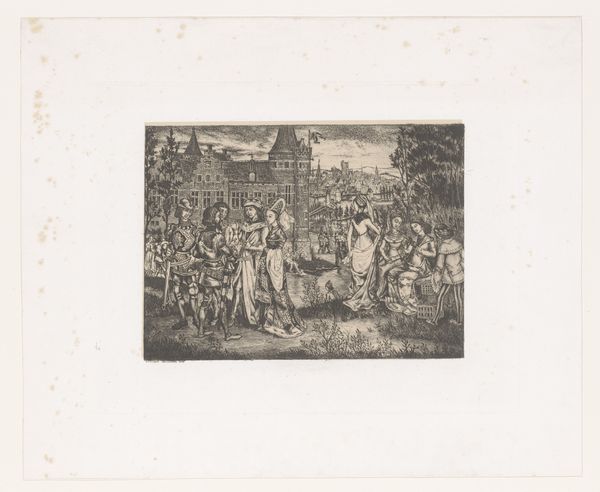
print, engraving
# print
#
landscape
#
engraving
Dimensions: height 123 mm, width 136 mm
Copyright: Rijks Museum: Open Domain
Editor: Here we have an engraving titled "Oorspronkelijke Amerikanen bij een tipi," or "Native Americans at a tipi," dating from sometime between 1650 and 1750 by G. van Houten. It seems to depict a colonial encounter of sorts. How do you interpret this work in terms of its representation of Indigenous people and colonial dynamics? Curator: The engraving, ostensibly depicting Native Americans, necessitates a critical lens, especially concerning the power dynamics inherent in its creation. It is essential to question the perspective through which these individuals are portrayed. How does the artist's potential bias as an outsider inform the composition and narrative? Editor: I notice there's a juxtaposition between the seeming serenity of the domestic scene and the hunting activities in the background. Does that speak to a specific narrative being constructed here? Curator: Precisely. Considering this was created during a period of intense colonial expansion, the "serenity" might be a strategic framing. Are we looking at an attempt to legitimize colonial presence by presenting Indigenous life as simple or passive, thus creating justification for intervention? Where is the agency in their depiction? Are they truly represented, or are they being represented through a colonial filter? Editor: It's almost as if the artist is presenting a snapshot, but one carefully curated to tell a specific story to a European audience. Curator: Exactly! It invites us to examine the ways in which cultural narratives are constructed and reinforced. Furthermore, this piece can provoke thought about the historical impact of colonialism, inviting considerations of the exploitation and cultural erasure it inflicted upon Indigenous populations. It becomes a crucial act of resistance and reclaiming their stories, in their voices, and on their terms. Editor: It definitely changes my perception, viewing this engraving as a commentary on colonialism itself. Curator: Absolutely, recognizing the layers of historical and social context allows us to engage more meaningfully with the artwork. It allows us to think more broadly about the narratives being told in these artistic displays.
Comments
No comments
Be the first to comment and join the conversation on the ultimate creative platform.
